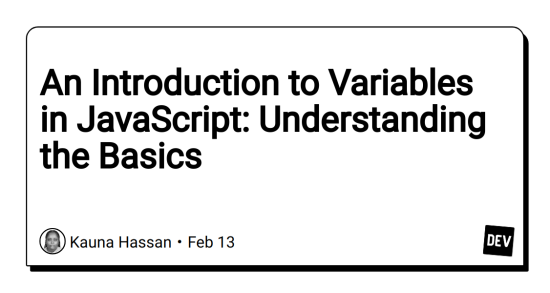Variables are one of the core building blocks of any programming language, including JavaScript. In this article, we will provide an in-depth introduction to variables in JavaScript, including what they are, how to declare and use them, and why they are so important for web development.
What are Variables in JavaScript?
Variables are named containers that store data in a program. In JavaScript, variables can store values of various data types, such as numbers, strings, and boolean values. Variables are declared using the keyword “var”, “let” or “const”. Once declared, the value stored in a variable can be changed or referenced throughout the code.
Why are Variables Important in JavaScript?
Variables are a crucial aspect of any programming language, as they allow developers to store and manipulate data. Without variables, it would be difficult to create dynamic and interactive web pages, as data would need to be hardcoded into the code. With variables, however, data can be stored in one place and referenced throughout the code, making it easier to manage and update.
How to Declare Variables in JavaScript
To declare a variable in JavaScript, use the keywords “var”, “let” or “const”, followed by the variable name, which is usually written in camelCase or snake_case. For example:
var myVariable;
let myVariable2;
const myVariable3;
It is also possible to declare a variable and assign it a value at the same time, like this:
var myVariable = 'Hello World';
let myVariable2 = 42;
const myVariable3 = true;
Once a variable has been declared and assigned a value, it can be referenced and used throughout the code. For example, you can use a variable to store the value of a user’s input and then use that value to perform calculations or manipulate the page in some other way.
Data Types in JavaScript
JavaScript supports several data types, including:
String: A sequence of characters, such as “Hello World”. Strings are declared by enclosing the text in quotes, either single or double.
Number: A numerical value, such as 42 or 3.14.
Boolean: A true or false value.
Undefined: A variable that has been declared, but has not been assigned a value.
Null: A variable that has been declared and assigned the value of null, which represents the absence of a value.
It is important to choose the appropriate data type for your variable, as this will affect how the variable is used and manipulated throughout your code.
Conclusion
Variables are an essential aspect of JavaScript, allowing developers to store and manipulate data in a program. Understanding how to declare and use variables, as well as the different data types supported by JavaScript, is a crucial step in learning this programming language. Join me in my next article as we dive deeper into data types in javascript.



